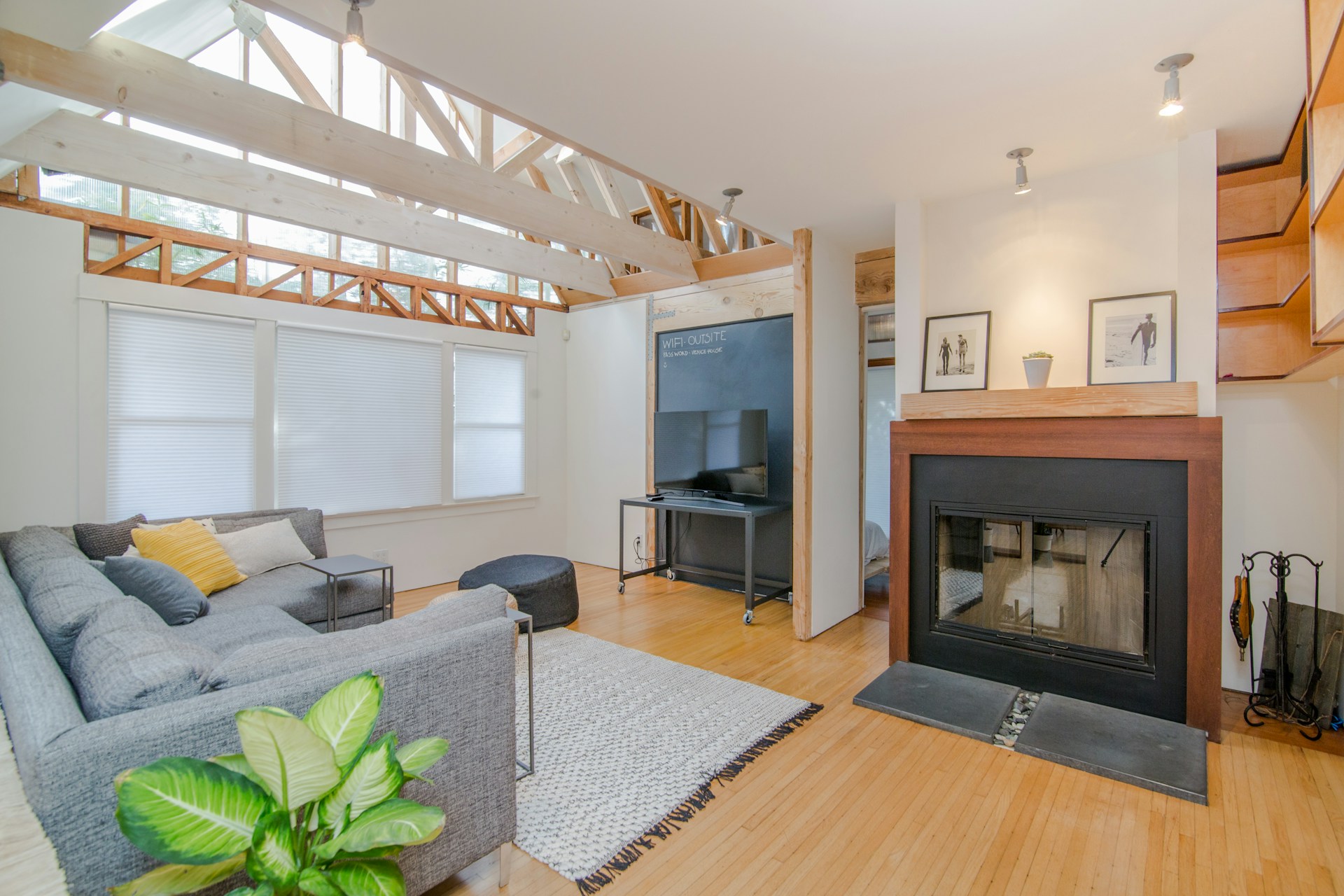Live in USA: Advantages, disadvantages & costs
If you want to live in the USA, check this post that covers the advantages and disadvantages of emigrating to this country.
The USA is one of the most appealing places to live, thanks to its size and strong economy. It’s no surprise that millions have been drawn there in search of a better quality of life.
The USA offers one of the most dynamic lifestyles among developed countries. For years, it’s been a melting pot of cultures, attracting people looking to grow professionally, advance their careers, and build a better life.
So, what is it about the USA that draws so many people in? Let’s take a look at some of the key factors that set it apart from other countries that also promise a high quality of life.
Quality of life in the United States
The USA has long been a nation of immigrants, which has shaped its rich multicultural identity. This diversity has been fueled by opportunities for work, access to education, healthcare, and a generally high standard of living for most residents.
Let us address one by one the most important elements of a guide that will allow us to generate a more realistic view of what it is like to live in the USA.
1. Do you want to study in the United States?
The USA is home to some of the world’s top universities. According to the Academic Ranking of World Universities (ARWU), schools like Harvard, Stanford, UC Berkeley, and the University of Massachusetts consistently rank among the best.
Let’s talk about some key points you should know about education in the country and the costs of public and private universities.
- Investing in scientific research at universities is a key priority for the government. From an early age, in primary and secondary schools, there’s a strong focus on encouraging interest in areas like technology, education, math, and the humanities.
- There are plenty of public and private universities, and getting in typically starts with submitting academic records and recommendation letters, followed by English proficiency tests and exams related to your chosen field of study.
- Tuition at public universities in the USA typically ranges from $10,000 to $25,000 per year, while private institutions can sometimes reach up to $60,000 annually.
- For both public and private schools, the overall cost can climb even higher once you factor in housing, food, transportation, and the materials you’ll need for your studies.
- On average, international students in the USA need between $1,200 and $2,000 a month to cover living expenses (this can vary depending on your lifestyle).

2. The United States invests heavily in health care
Healthcare is another strong point, with the USA standing out among developed countries thanks to its cutting-edge research, technological innovations, and highly skilled medical professionals.
The USA doesn’t have universal healthcare, most services are private and can come with a high price tag. Still, there are programs designed to help certain groups get the care they need.
- The cost of mandatory health insurance varies depending on factors like age, coverage type, and where you live. For instance, a 30-year-old paying for their own plan might spend around $650, while seniors often pay over $1,000.
- Patients sometimes wait a long time to be seen by general practitioners and specialists.
- Having health insurance is essential, since medical expenses without it can be very high. A regular doctor’s visit can cost between $100 and $250, and emergency care bills can reach up to $20,000 depending on the situation.
3. Housing: A Major Challenge in the United States
Buying a home can be challenging, as real estate experts say demand still outpaces supply. Here’s some helpful information on how to buy or rent a place in the USA.
- You need to start with good advice, as well as patience to access good opportunities in major cities.
- Housing costs are high, especially in major cities where most of the country’s labor force is concentrated.
- Prices can reach more than $500,000 depending on the type of property.
- When it comes to paperwork, a USA visa is usually the main requirement for entering the country. If you’re applying for a mortgage, you’ll also need a solid credit history, proof of income, and a Tax Identification Number (ITIN).
- The ITIN is mandatory for foreigners buying a house in the United States, who are not residents and do not have social security.

On the other hand, renting can be a smarter way to start living in the USA, since rental prices tend to be more stable compared to buying property.
- Rent prices vary depending on the city, neighborhood, size, and type of property, typically ranging from $1,650 to $3,500 a month, depending on your needs.
- Requirements can vary by state, but generally you’ll need a passport or ID, a good credit history, proof of income to show you can cover rent, a security deposit usually higher than one month’s rent, and some landlords might also check your immigration status.
4. High cost of living
The USA is known for having one of the highest costs of living among developed countries, but it really depends on your lifestyle, the state you choose to live in, and your personal needs.
- Rent: Varies according to the characteristics, location and area of the house. However, a basic house with good features and area can cost between $1,650 and $3,500 per month.
- Food costs: It varies depending on where you shop and the city. On average, Americans spend $800 on food monthly.
- Education: The cost is high, ranging from $10,000 to $50,000 per year, depending on the degree and the institution you choose.
- Health: Required expense and can be between $600 and $1200, the charge will depend on your age and the insurance you get.
- Transport: Costs can be relatively high, but on average, in cities such as New York, Miami or Los Angeles, the cost can be between $112 and $132 per month.
In short, someone earning between $5,000 and $6,000 a month can expect to spend around $4,800 on living expenses, including utilities, transportation, entertainment, healthcare, food, and housing.
5. Great internet coverage and connectivity
You won’t have to worry about staying connected in the USA, around three-quarters of people have internet access and most use it on their phones.
The average fixed internet speed is about 215 Mbps. The country has set broadband standards at 100 Mbps for downloads and 20 Mbps for uploads. For mobile networks, average upload speeds are around 9.5 Mbps, with downloads reaching 106 Mbps. These numbers show that investment in infrastructure has significantly improved nationwide.
Important: If you are a frequent traveler and want to stay connected without worrying about expensive roaming or looking for a new SIM at every destination, Holafly’s subscription plans are for you. With a single eSIM, enjoy internet in more than 170 countries for a fixed price and no surprises on your bill. Travel without limits and connect easily and securely! 🚀🌍

Advantages of living in the United States
Stable employment rate
- Employment remains steady. According to the Bureau of Labor Statistics, the unemployment rate held at 4.1% in the early months of 2025, which is still low compared to many other countries.
- In 2025, the industries with the most job openings include warehousing, transportation, healthcare, as well as agriculture and other caregiving-related fields.
- Special visa procedures and processes, like an employer’s request, make it possible to access these jobs.
The U.S. economy inspires confidence
- The United States is one of the world’s leading economic powers, driving significant capital flow across various sectors for decades. This has fueled growth and enabled substantial investment in infrastructure, healthcare, education, and overall quality of life.
- Other key drivers of the U.S. economy include energy exports, a robust industrial sector, and heavy investment in technology. These factors create numerous job opportunities and contribute to high social well-being, which in turn fuels greater consumer spending.
Multiple choices in education
One of the greatest benefits of living in the USA is access to world-renowned universities, making education a major plus. Besides the big-name universities, there are plenty of smaller schools that are well-respected globally and could be a more budget-friendly choice.
Cultural diversity
As one of the top destinations for immigrants worldwide, the USA boasts a rich cultural diversity shaped by traditions and communities from all over the globe.
Immigrants are generally welcomed, and you’ll have plenty of opportunities to connect with different cultures, experience new ways of life, broaden your perspective, and even pick up new languages.
Purchasing capacity
With the dollar being such a strong currency and many big companies based in the USA, people here enjoy good buying power and easy access to a wide variety of goods and services.
Disadvantages of living in the USA as a foreigner
Moving to the USA also comes with its challenges—things like the cost of living, healthcare, housing, and education can be tough to navigate. Here’s why:
- Vehicle reliance: In many places, limited public transport means you’ll likely need a car. Depending on the model, prices usually range from $40,000 up to $60,000 or more.
- Health: Handling the cost is expensive since most healthcare is private, and if you choose not to have insurance, medical bills can skyrocket. For instance, a hospital stay could easily run up to $20,000.
- Access to housing: Limited and costly to purchase. Although renting is easier, it is still a challenge to get a spacious, well-located house at a reasonable value.
- Education comes with a high price tag due to its quality and global reputation. On top of that, expenses like food, transportation, health insurance, and school supplies add up.
- Insecurity: Studies from the University of Chicago’s Crime Lab reveal that some states struggle with public perception around safety. According to FBI data, at least 1,900 out of every 100,000 residents were victims of theft.
- Changing migration system: Becoming a legal resident in the United States often depends on the political climate at both the national and local levels, and the processing of your paperwork can take months or even years.
Frequently asked questions about living in the United States
You need to obtain a work permit from the Citizenship and Immigration Services, which grants authorization to work in certain jobs for set periods.
Minimum wage in the U.S. varies by state, but generally falls somewhere between $1,600 and $3,500 per month.
According to the U.S. Census Bureau, the population of the United States is 341,145,670 people, with an equal number of men and women.
The timeline can vary a lot based on the political situation. Sometimes it only takes a few months, but other times it might take several years to complete.
Some cities stand out either because they’re major economic and financial hubs, like New York, Chicago, and Los Angeles, or because they attract thousands of tourists every year, such as Miami, New Orleans, and Las Vegas.





 Language
Language 


















 No results found
No results found








